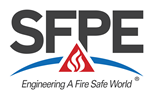FEMTC 2011
Validation of FDS Prediction on Fire-Induced Flow: A Follow-up to Previous Study 
James Quintiere - Department of Fire Protection Engineering, University of Maryland
Abstract
In an attempt to investigate the accuracy of predictions of fire-induced flow in compartment by FDS, follow-up study was explored resting on the previous achievement. Simulations with more delicate configurations in multiple scenarios were performed. The results are compared with the Steckler’s experimental data obtained at NIST in 1982. Improvements to the previous study include finer grids and a correction of radiative heat in the combustion model. The computational domain was increased such that it includes the space outside the doorway. In order to get a general application to different scenarios with varied door width, the distance of the domain increase was scaled to the effective diameter Dd, the diameter of a circle with the same area as the doorway. Efforts to compensate the reduced entrainment due to a rectangular burner used in the model instead of a round one in the experiments are made by shifting the burner locations for the scenarios of fire at corner or against wall. It is found that the computational domain extension needed is 0.5Dd to avoid the possible deviation. Surprisingly, a distance of two times of burner diameter is needed to shift the fire locations away from walls, instead of one radius. The improvements made to the FDS simulation allowed significant improvements to the prediction of mass flow rates for all three positions of the fire source. However, there is not much improvement for the remaining three parameters being compared: lower layer temperature, smoke layer height and neutral plane height. It is not advised that such zone-model-based parameters are predicted by using FDS.
Presentation
Resources
| Paper | Presentation | ||
|---|---|---|---|
| HTML | HTML | ||
| Resources Archive File (.zip) | |||

